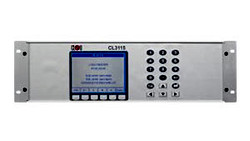Energy systems around the world currently rely on large, centralized power plants that transmit electricity over vast distances to homes and businesses. While this model has served us well for over a century, it faces growing challenges in reliability, cost and environmental impact. An emerging alternative is decentralized energy production using distributed energy resources located near or at the site of end-use. This article examines the technical issues of implementing decentralized systems and argues they represent the future of sustainable, resilient and affordable energy access.
The Case for Decentralization
Centralized grids face increasing pressure on multiple fronts. Power outages due to extreme weather or other disruptions cost the global economy billions each year. Maintaining and upgrading ageing transmission infrastructure incurs massive long-term costs borne ultimately by ratepayers. Burning fossil fuels for centralized plants also contributes greatly to climate change through carbon emissions. Reliance on imported fuels raises economic and geopolitical concerns.
Distributed energy resources (DER) located at or near points of consumption address many such challenges. Having dispersed generation means failure of any one component has limited impact on the whole. Local microgrids can "island" from the main grid and maintain power during widespread outages. Renewable technologies like solar panels, wind turbines and fuel cells can provide emission-free power. Combined heat and power or waste heat recovery further boost efficiency.
Strategically sited battery storage stabilizes intermittent renewables and allows for energy time-shifting. Overall, decentralized designs enhance reliability, sustainability and energy autonomy for users.

Analytical Modelling
To quantify the benefits, researchers have developed optimization models accounting for technical parameters of distributed energy systems. Key factors include local solar irradiation and wind data, electric and thermal load profiles, component costs and lifetimes. Models co-optimize choices of generation portfolio, storage sizing, power controls and system resilience under different climatic and economic scenarios.
Results show decentralized systems integrating diverse renewables at multiple scales already offer lower lifetime costs than grid extensions in remote or islanded communities. For urban/suburban regions, a gradual roll-out starting with residential rooftop solar coupled with targeted storage installations reduces peak loads and reinforcement needs.
Over decades, the same model finds predominance of renewables with seasonal storage achieves grid decarbonization affordably. Ongoing cost reductions will strengthen the business case across broader demographic and infrastructure contexts.
Planning and Integration
Technical and regulatory frameworks must evolve to actualize decentralized energy's promise. At distribution levels, advanced controls, power electronics, sensors and communications facilitate two-way power flows and optimum dispatch. Microgrids require automated synchronization, isolation and management of local generation-load balance.
Local utility planning processes now plan and upgrade wires considering distributed resources. Wholesale markets may reward distributed energy services like voltage support alongside bulk power.
Consumers procuring a diverse and optimally-sized portfolio can become energy self-sufficient, with surplus power fed back to the grid. Third-party ownership models also make clean decentralized options accessible universally. Energy communities allow aggregated groups of households and businesses to collectively invest in their own infrastructure. With supportive policies and rate designs, society transitions toward a decentralized future achieving greater equity, affordability and environmental stewardship.
Takeaway
Decentralized energy systems are the future, bringing power generation closer to home with renewable sources. Not only are they better for our environment, but they also fortify our energy supply against disruptions and give communities control over their energy choices. At CLOU, we're proud to contribute to this shift with our cutting-edge energy storage solutions, precise smart-metering, and advanced AMI systems, which are integral to building robust and efficient local energy networks. By investing in these technologies, we're not just adapting to change; we're driving it, ensuring a clean, affordable, and sustainable energy future for all.
If you have any inquiries or need further information about decentralized energy systems and how our products play a role, please do not hesitate to reach out to us. We are here to assist you and welcome your valuable thoughts and comments.
Until then, keep your electrons in check and your energy positive!






All comments are moderated before being published. Inappropriate or off-topic comments may not be approved.